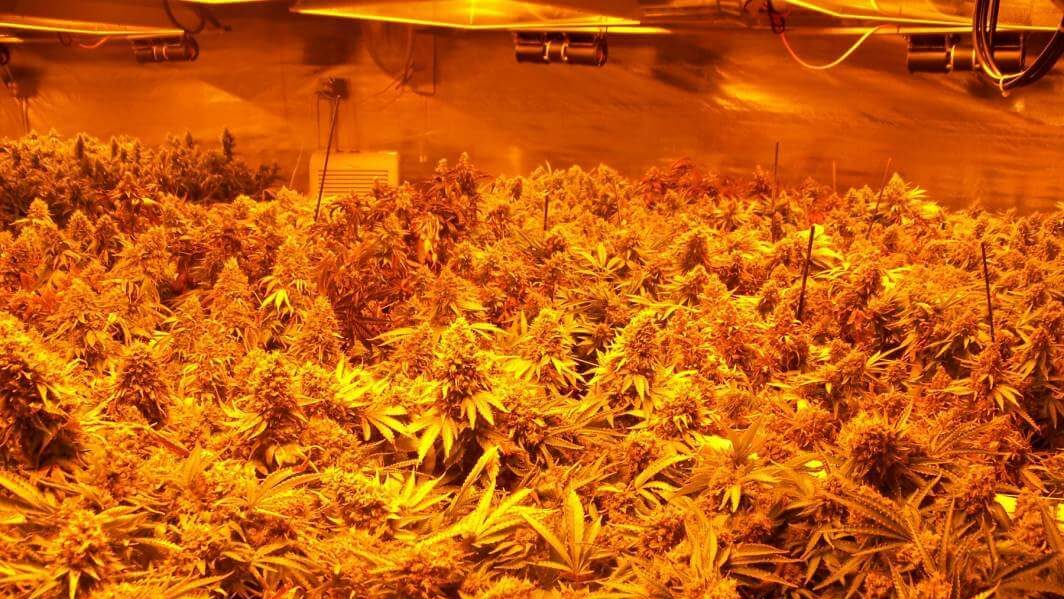Cannabis is not just one single thing when it comes to using it for medical reasons. The marijuana plant has many different types, called strains. Each strain is a little different, with its unique mix of natural ingredients that can affect people differently.
For medical use, cannabis comes in several forms, too – you can smoke the dried plant material, vape oil or concentrates, use creams or ointments applied to the skin, or consume edible products like gummies. With all these choices, finding the perfect cannabis product that best treats your specific medical issue can take some experimenting.

But getting familiar with the array of cannabis strains and ingestion methods available puts you on the right track to finding the ideal option that works best for your needs.
3 Types of Medical Marijuana Available in Pharmacies
When visiting a medical marijuana dispensary, you’ll typically find three main types of cannabis strains available – indica, sativa, and hybrids. These different strains produce distinct effects and potential therapeutic benefits due to their unique makeup of cannabinoids like THC and CBS, as well as terpene profiles. The specific strains and products offered will often list their cannabinoid composition and ratios.
- Indica Strains
Indica strains come from the cannabis indica plant species. These strains are known for producing calming, relaxing effects on both the mind and body. Indicia plants typically have a short, bushy stature with wide leaves. Indicas can be helpful for neurological issues:
- They can reduce anxiety and stress and regulate moods by interacting with the body’s cannabinoid system
- The CBD indices may treat epilepsy by controlling seizures
- Indicas show promise for diseases like Alzheimer’s and Parkinson’s by protecting brain cells
- They can ease neurological pain from conditions like multiple sclerosis

- Sativa Strains
In contrast to indicas, sativa strains tend to produce more energizing and uplifting effects. Sativa plants have a taller, slimmer structure with narrower leaves. Like indicas, sativas contain therapeutic compounds like THC and CBD that interact with the endocannabinoid system. Some key therapeutic benefits of sativas include:
- Analgesic (pain-relieving) for neuropathic pain conditions
- It may help ease anxiety, depression, and mood disorders
- Anti-inflammatory properties could reduce neuroinflammation
- It may provide neuroprotection against diseases like Alzheimer’s
- Hybrid Strains
Hybrid strains are bred by crossbreeding different varieties of sativa and indica plants in an effort to combine their unique effects, cannabinoid profiles, terpenes, and other compounds. Hybrids can be sativa-dominant, indica-dominant, or a balanced 50/50 hybrid. Its therapeutic effects depend on cannabinoid and terpene profiles:
- High-CBD hybrids may treat epilepsy and provide neuroprotection
- High-THC hybrids could relieve pain and improve mood
- Balanced THC and CBD ratios combine analgesic, inflammatory, and well-being benefits

How Is Marijuana Taken?
Cannabis can be consumed in its raw, plant-based form by using dried flower buds. Alternatively, it can be taken by ingesting specific chemical compounds extracted from the cannabis plant, like THC or CBD. However, cannabis laws differ by location, so the legality of these consumption methods depends on where you live. The three primary methods for consuming cannabis are:
- Inhalation
One way to use cannabis is by inhaling it into your lungs. This can be done by smoking the dried cannabis flower buds. People roll the buds up in a joint (like a cigarette) or put them in a pipe or bong, light it, and breathe in the smoke. Another inhaling option is using a vaporizer device instead of smoking.
A vaporizer heats the buds just enough to create a vapor you can inhale without actually burning the plant material. When you inhale marijuana this way, you feel the effects pretty quickly, usually within 5-10 minutes. But the effects typically don’t last long, around 2-4 hours.

- Oral Consumption
Marijuana can also be consumed by eating or drinking it. This is done by adding cannabis extracts or the active compounds THC and CBD to food and beverage products. Things like brownies, gummies, chocolates, teas, or sodas have been infused with marijuana.
You can also take liquid tinctures or capsules filled with cannabis oil. When you eat or drink medical marijuana products, it takes a lot longer to feel the effects compared to inhaling – usually between 30 minutes to 2 hours after consuming. But the effects last much longer, too, often 4-8 hours.

- Topical Application
The third way is using medical marijuana topically by applying it directly onto the skin. Cannabis compounds are infused into lotions, creams, balms, or salves that you rub into a specific area of your body.
These topical products are good for localized pain relief or skin conditions in that area. When using a cannabis topical, you don’t experience mind-altering effects because the active compounds aren’t entering your bloodstream.
The relief is just focused on where you applied it. Topicals typically start providing some relief within 5-20 minutes and can last several hours.
What Does Medical Marijuana Treat?
Medical marijuana can help people with different health issues feel better, but states have different rules on what it can be used for. The research shows it works well for pain relief like arthritis, back pain, neck pain, and nerve pain that isn’t from cancer. It also helps reduce throwing up from cancer treatments and controls seizures for some rare disorders.

People use medical marijuana for other reasons, too, like multiple sclerosis, HIV/AIDS, Crohn’s disease, hepatitis C, anxiety, sleep problems, and poor appetite, even though the evidence isn’t as strong for these conditions.
No matter if it’s a pill, oil, or other form, the ingredients THC and CBD are important for medical marijuana to work properly. Doctors give specific products based on the patient’s symptoms and needs.
Wrapping up
Medical cannabis comes in different forms to treat various medical issues. The main types are indica strains that relax the mind and body, sativa strains that provide an energizing effect, and hybrid strains that combine indica and sativa effects.

Marijuana can be smoked, vaped, eaten in edible form like gummies, or applied as a cream on the skin. Each form works a bit differently in the body. It may take some trial and error, but exploring the different marijuana strains and consumption methods allows patients to find the specific product that works best for managing their particular symptoms or conditions.
With so many options available, medical cannabis provides a natural way for patients to find relief tailored to their needs


